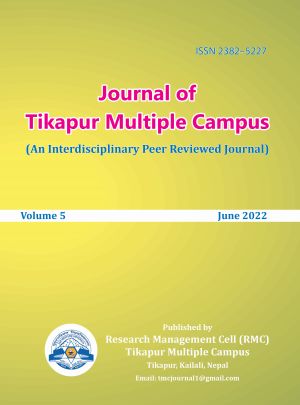Struggle for Identity and Independence in V.S. Naipaul’s A House for Mr. Biswas
DOI:
https://doi.org/10.3126/jotmc.v5i1.46515Keywords:
Cultural identity, freedom, diaspora, displacementAbstract
V.S. Naipaul’s A House for Mr. Biswas– a biographical and fictionalized novel– sheds light on the dangling position of Mr. Mohun Biswas, the protagonist, epitomizing his root culture and alien culture in the course of his search for identity. This research study explores the trauma of cultural alienation and the central character’s shameless efforts to establish his belongings. He confronts the problem of dislocation and displacement while struggling for owning a house of his own at the frontier of cultures. The difficulty of adjustment, assimilation, and belongingness is evident in his involvement in various jobs. He is devoid of sound links with his customs and values. His constant repulsion and attraction to the cultures and traditions of the West and East leave him in a state of in-betweenness. Moreover, this research article has examined the pain, the plight, and the predicament of Mr. Biswas continuously struggling to acquire a house of his own which is a potent symbol of his autonomous existence. In line with such a backdrop, the purpose of the study is to examine the state of anatomical/cultural identity and freedom of individuals in the novel, weighing up the diasporic sensibility through the protagonist. The research applies a descriptive-based qualitative research design employing the diasporic underpinnings as a theoretical lens. The study is significant for it discloses more about persons’ root identity and freedom, the prime and demanding right of people.
Downloads
Downloads
Published
How to Cite
Issue
Section
License
Copyright (c) 2022 Krishna Prasad Jaisi

This work is licensed under a Creative Commons Attribution-NonCommercial 4.0 International License.
This license enables reusers to distribute, remix, adapt, and build upon the material in any medium or format, so long as attribution is given to the creator. The license allows for commercial use.




